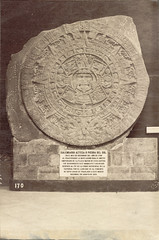The First Common Market?
My Own True Love and I leave next week for Belgium and my thoughts are turning toward Waterloo, Flanders Field, and the Hanseatic League.* Especially the Hanseatic League.
I'm fascinated by traveling merchants, from the Silk Road caravans that brought luxury goods from China and India to the Muslim peddlers who sold dry goods and notions to farm wives in the upper Midwest in the nineteenth century.** Part of it's the romance of the thing: desert caravans, clipper ships and gypsy-style wagons. Part of it is the hardheaded economics of who bought what from where.
In many ways, the Hanseatic League can be seen as Europe's first attempt at a Common Market. In the twelfth century, the European economic world was expanding. Increased agricultural productivity allowed more people to work at something other than farming, creating surplus goods for sale and a need for raw materials. (This is the same thing that made the Crusades possible. Cool, huh? The way different bits of history link together like that?) At the same time, the Teutonic Knights, a fighting monastic order interested in conversion and conquest (or possibly conquest and conversion), invaded the Slavic lands to the east. They established a network of fortified bases along the Baltic Sea that became new towns with markets where foreign goods could be bought and sold.
Being a merchant was dangerous work. By land, you had to worry about armed brigands and raiding militias. By sea, you were in danger from storms as well as pirates and their legally sanctioned cousins, privateers. Merchants from the newly formed cities of the Baltic began to join together into informal associations (hansas) to make long-distance trading safer.
They soon learned that working together not only brought greater safety at sea, it also made it easier to negotiate in the foreign towns with which they traded. (Collective bargaining, anyone?) Loose associations grew into merchant companies and guilds. By the end of the thirteenth century, Hanseatic merchants had built a trading network that stretched from Bergen (Norway) in the north, to Novgorod (Russia) in the East, and London (you know this one, right?) and Bruges (modern Belgium!!) in the west.
Hanseatic merchants were intermediaries between the workshops of Western Europe and the forests of Eastern Europe. They brought salt from the mines at Kiel to the herring fisheries of the Baltic. They exchanged cloth from Flanders, wool from England, and metalwork from Westphalia for furs, timber, wax, grain, and amber from Russia. They traded in salted fish from Scandia, wine from the Rhineland, copper and iron ore from Sweden and beer from north Germany, once Hamburg brewers figured out that adding hops would stabilize their product for transportation.
The Hanseatic League dominated northern Europe until the mid-sixteenth century, when they were elbowed aside by England and the Netherlands, whose merchants had larger, more seaworthy ships and a free-trade philosophy that made them welcome in foreign markets.
Bruges and Antwerp, here we come!
*Not to mention chocolates, waffles, beer and pommes frites.
** Yes, you read that right. Muslim peddlers in rural Iowa in the 1890s. A story for another day.
It’s a Date!
Several readers of this blog have complained that I forget to include dates in my blog posts. It's a fair cop.
It's not that I don't know historical dates. (Okay, sometimes I don't know the exact date, but I know where to look it up.)
I even agree that dates are valuable, taken in small doses. (But don't get me started on the over-reliance on memorizing dates in high school history classes. It's called hi-STORY, not chronology.)
I just don't think about dates much. Like many historians I know, I tend to think about events, people, and ideas in context instead of pegged to a date. Ask me about the War of 1812 and I want to talk about troubles on the western frontier, the Napoleonic Wars, and differing ideas of citizenship, not the fact that it happened in--oh, bad example.
Whether you realize it or not, you do the same thing. My Own True Love, complaining about the absence of a date for Robert Peel and the London bobbies in a recent post, summed the concept up: "If you tell me he's a Roman emperor, I know he lived in ancient Rome. I don't have any idea when this Peel guy lived."
The problem is, your context and mine are probably not the same.
Therefore, I do solemnly swear that I hereafter will try to remember to include dates (or at least a general historical framework) in my blog posts.
For the record, here are some of the dates that were missing in previous posts: 1915, 1095, 1829.
Happy?
Public Toilets and Heads of State
As those of you who are reading along know, I recently learned that public toilets are called vespasianos in Italy, after the Roman emperor Vespasian, who introduced the concept to the empire. This led my brain to London bobbies, named after British Prime Minister Robert Peel, who founded the London police when he was Home Secretary. * Which made me wonder how many other words there are like this that refer back to a head of state. Not places, buildings, or institutions. Not names borrowed for marketing purposes, like a Lincoln town car or Prince Albert in a can. **
I wracked my brain. I Googled hard. The closest thing I came up with is the sandwich: the right kind of term, but you just can't compare a dissipated English nobleman with a hard-working Roman emperor.
Tell me, Dear Readers, what am I missing?
*Rest assured, Dear Readers, I am NOT comparing policemen to public toilets. Though now that I think about, in both cases I'm glad to see one when I need one.
**Though Prince Albert was not technically a head of state.






